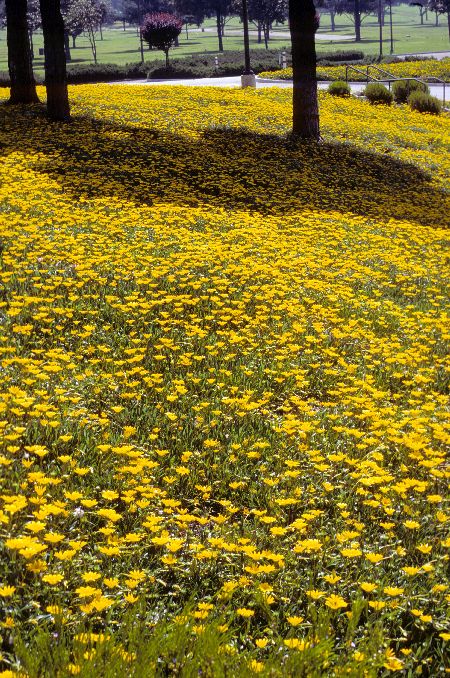
Gazania rigens leucolaena
Trailing Gazania
The flower colors of Trailing Gazania are gold, yellow and orange. Many selections are available. Not always long-lived. Avoid overwatering. Gazania linearis 'Colorado Gold' is a related species that is more tolerant to cold. Canopy coverage: 3 square feet.
[Read More]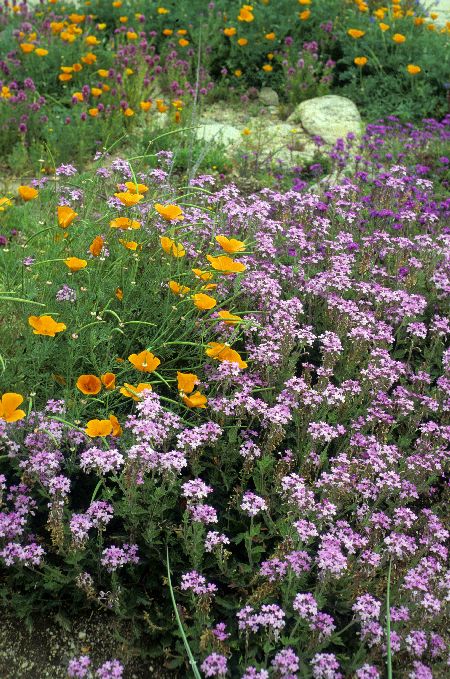
Glandularia gooddingii
Goodding Verbena
Goodding Verbena is typically short-lived but reseeds readily to continue future plantings. Excellent choice as a fast cover for bare ground. Canopy coverage: 3 square feet.
[Read More]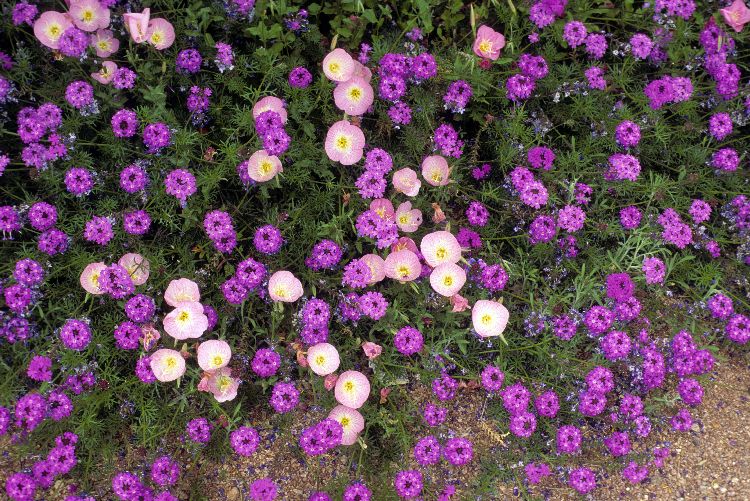
Glandularia pulchella
Moss Verbena
This flowering Verbena has a long blooming season—spring into fall. Fast-growing, fine-textured groundcover for color. Canopy coverage: 7 square feet.
[Read More]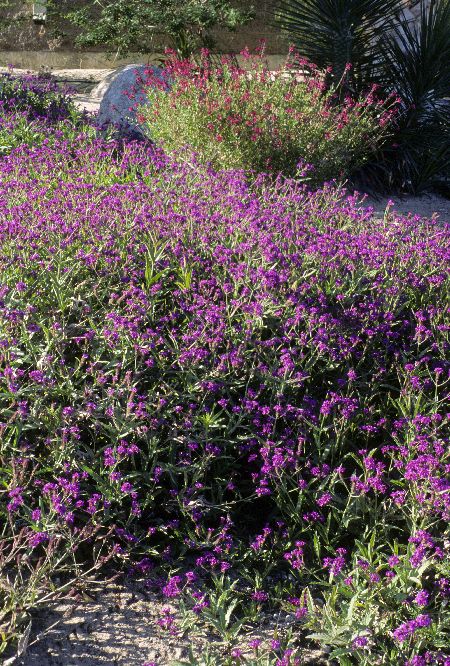
Glandularia rigida
Sandpaper Verbena
Consider this Verbena an easy-care groundcover, although it can be short-lived. Common name due to rough texture of leaves. Little care required; cut back dead or unsightly branches and past-prime flowers. Canopy coverage: 7 square feet.
[Read More]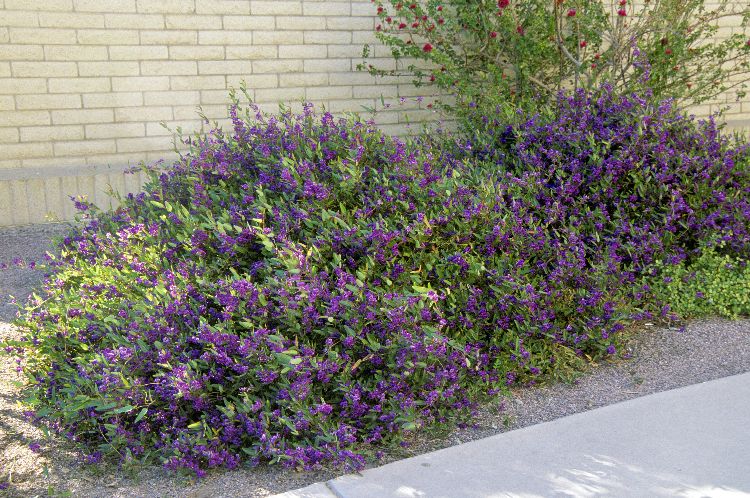
Hardenbergia violacea
Lilac Vine
This is a fast-growing, twining vine or groundcover that provides welcome flowers in shades of purple and lilac during winter when little else in in bloom. May require protection from freezing in cold winter regions. Canopy coverage: 79 square feet.
[Read More]Juniperus horizontalis 'Blue Chip'
Blue Chip Juniper
This is a mat-forming Juniper that literally hugs the ground. Plant 'Blue Chip' where it will have plenty of space to spread. Best with some protection from the sun in hot summer regions. Canopy coverage: 28 square feet.
[Read More]Juniperus sabina 'Buffalo'
Buffalo Juniper
Buffalo Juniper has appealing, bright green to olive green foliage. Leaves grow on long stems that spread horizontally close to the ground, forming a tight-knit mat. Accepts tough conditions. Attractive when it drapes and trails over ledges. Canopy coverage: 50 square feet.
[Read More]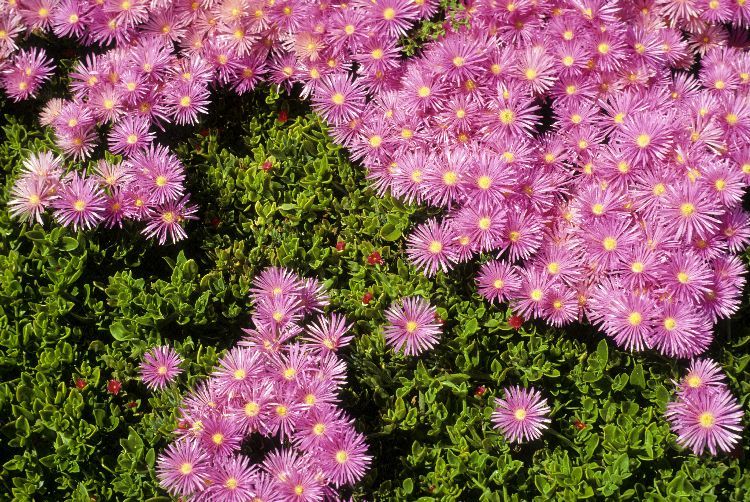
Lampranthus filicaulis
Redondo Creeper
Grows just a few inches high, but spreads as a groundcover up to 3 feet wide. Nice, small-scale cover on a gradual slope. Best in well draining soil. Accepts summer-dry conditions. Canopy coverage: 7 square feet.
[Read More]Lampranthus spectabilis
Trailing Ice Plant
From a practical viewpoint, this is a rapidly spreading plant that works well as a groundcover. But it's the brilliant flowers that catch the eye, blooming for a long period late winter into spring. Plants may be short-lived so be prepared to replant after three or four years. Accepts seaside conditions. Canopy coverage: 3 sqaure feet. Photos courtesy of Pam Pavela.
[Read More]Lantana 'New Gold'
New Gold Lantana
Tireless bloomer with flowers spring, summer, fall and winter in frost-free climates. Foliage may cause skin irritation. Canopy coverage: 7 square feet.
[Read More]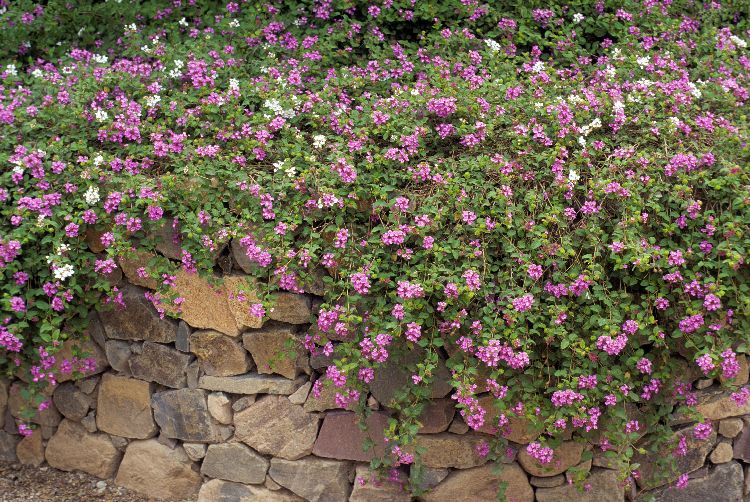
Lantana montevidensis
Trailing Lantana
Lantana has a long blooming season—spring into fall where winters are mild. Excellent groundcover or allow to drape over a ledge or large container. Canopy coverage: 7 square feet.
[Read More]Lobelia laxiflora
Mexican Bush Lobelia
Mexican Bush Lobelia puts on a show of color, and accepts a wide range of climates, from coastal to desert. Reduce exposure to the sun and limit summer water by planting where it will receive afternoon shade in hot summer areas. Best in well draining soils. Spreads wide via underground rhizomes, so be prepared to control its invasive tendencies. Canopy coverage: 13 square feet.
[Read More]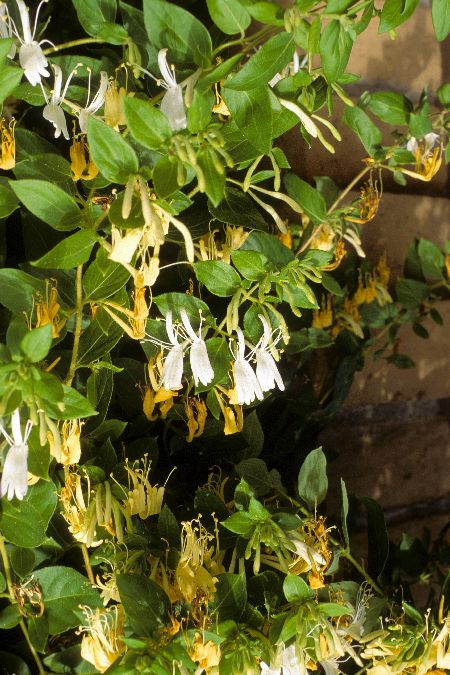
Lonicera japonica 'Halliana'
Hall's Honeysuckle
Hall's Honeysuckle can be grown as vine or groundcover. It is an aggressive grower that can become invasive, so be ready to control it. Fragrant flowers emerge as white then mature to yellow-gold. Canopy coverage: 491 square feet.
[Read More]Lonicera sempervirens
Scarlet Trumpet Honeysuckle
This twining vine can be evergreen, semievergreen or deciduous, depending on the severity of low temperatures. Striking, trumpet-shaped flowers are an attraction. Berries follow flowers, attracting birds. 'Magnifica' is said to produce larger flowers than the species. Canopy coverage: 79 square feet.
[Read More]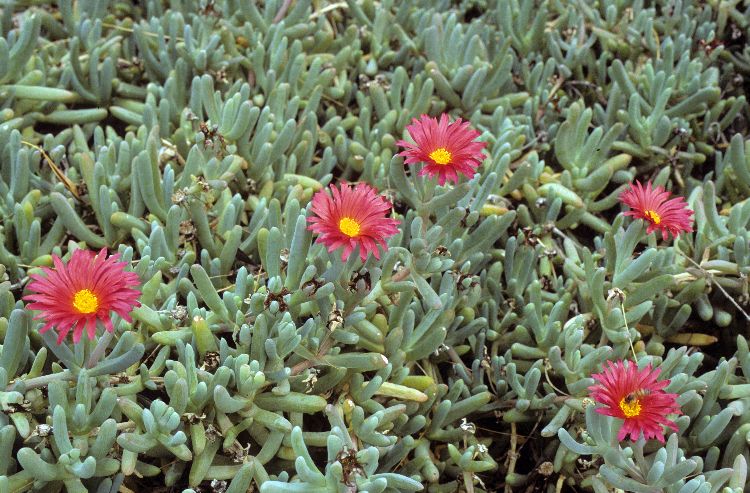
Malephorea crocea
Copper Ice Plant
This iceplant groundcover forms a dense, wide-spreading mat. Spring is primary bloom period with occasional flowers the rest of the year. Best with some protection from the sun in hot summer regions. Canopy coverage: 28 square feet.
[Read More]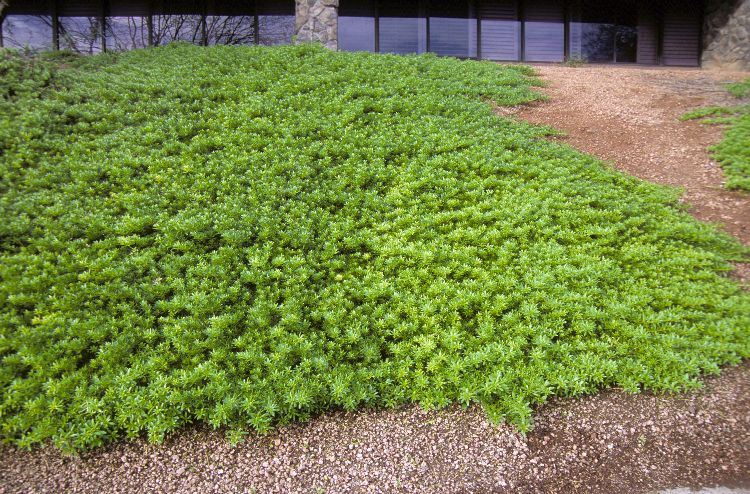
Myoporum parvifolium
Prostrate Myoporum
The foliage of Myoporum is rough in texture but the plant makes up for it as an excellent slope cover. Maintains low growth. Avoid overwatering or plant can die back in patches. Canopy coverage: 64 square feet.
[Read More]Nepeta racemosa
Catmint
This species is notorious for reseeding vigorously, so be aware plants may turn up where you don't want them. Improved selections are available; 'Walker's Low' makes a good groundcover. Also see Nepeta x faassenii, which produces sterile seeds. Canopy coverage: 3 square feet.
[Read More]Nepeta x faassenii
Faassen's Catmint
This Catmint hybrid is sterile, so does not set viable seed. It is an improved selection compared to Nepeta racemosa. Best with some protection from the sun in hot summer regions. Canopy coverage: 3 square feet.
[Read More]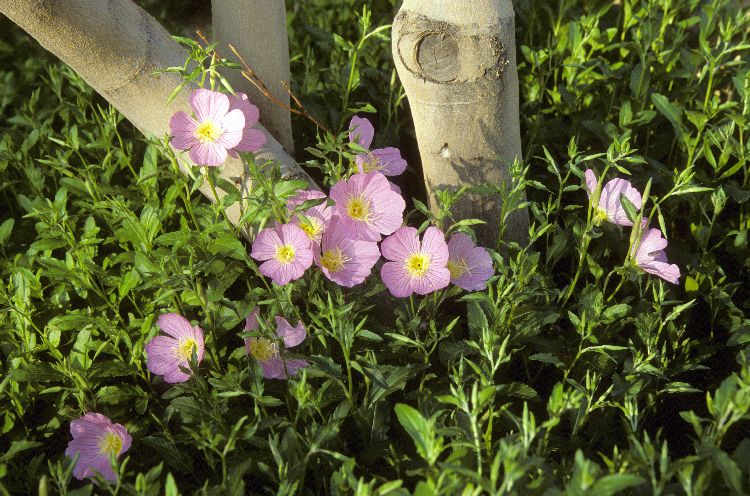
Oenothera berlandieri
Mexican Evening Primrose
The large, bright to dark pink flowers of Mexican Evening Primrose are profuse in spring. It evokes a lush, subtropical appearance. It is known to be invasive, so plant in containers or easily contained area. Freezes to the ground with cold temperatures but regrows the following spring. 'Siskiyou' is an improved selection. Canopy coverage: 13 square feet.
[Read More]Oenothera caespitosa
Tufted Evening Primrose
This Primrose blooms in the late afternoon and evening hours, so locate it near outdoor living areas or entries where it can be enjoyed. Flowers are fragrant, and can reach up to 4 inches across. Canopy coverage: 7 square feet.
[Read More]Oenothera macrocarpa
Missouri Evening Primrose
Missouri Evening Primrose produces large, 4-inch flowers that are pure yellow. Flowers last only one day, but because flowering is so profuse it is hard to notice. Accepting of tough conditions. Better with afternoon shade in hottest climates. Canopy coverage: 3 square feet.
[Read More]